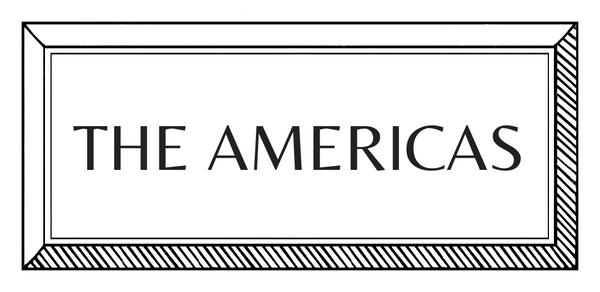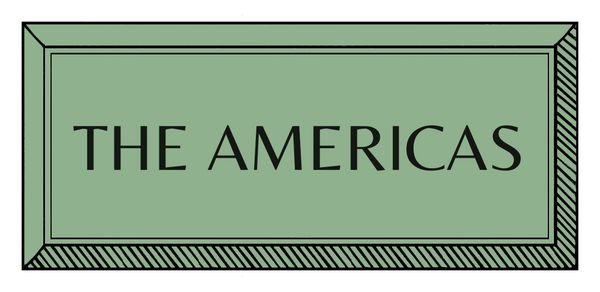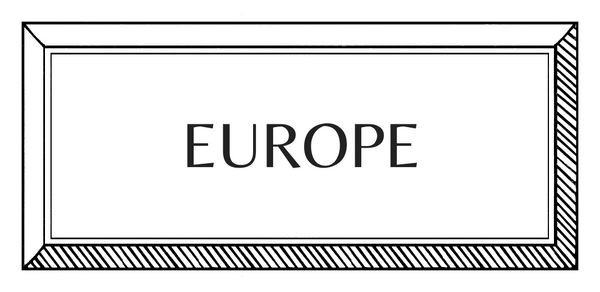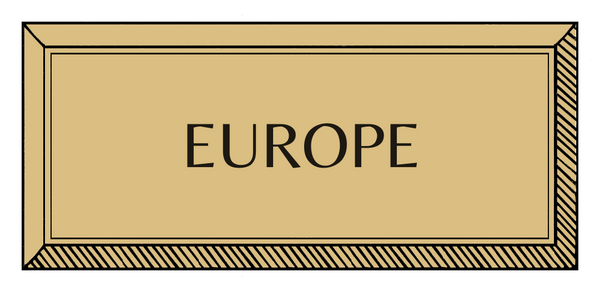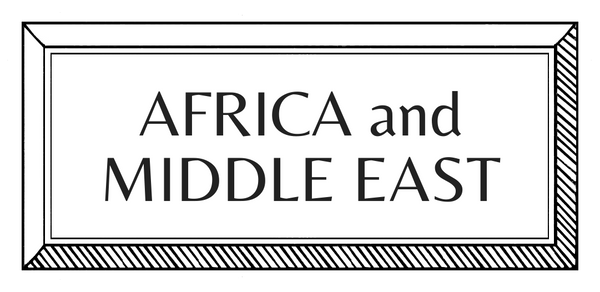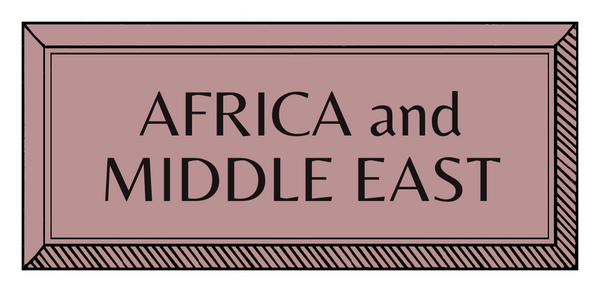MAKERS | EUROPE | UK | MULTI-MEDIA
Tess Newall | Decorative Artist

Decorative artist Tess Newall crafts enchanting hand-painted murals, furniture, and homewares that weave together atmosphere and storytelling. Drawing on thoughtful research and inspired by European folk art, she fuses traditional techniques with her distinctive artistic style, creating bespoke works for private clients and designers worldwide. At this year’s London Craft Week, Tess and her husband—furniture maker Alfred Newall—unveil the Herbarium Cabinet, a handcrafted homage to traditional artistry and natural history. Made in their East Sussex workshops, the piece pairs intricate hand-painted botanical studies with masterful cabinetmaking.
How did you begin?
I grew up in the Scottish countryside, with a historic building conservationist father and a fine artist mother. There were always projects happening on the kitchen table, and home felt like a place of endless creativity and productivity. My mum made everything - curtains for the house, clothes for us all. My brother and I would spend hours building dens in the woods which we would imagine mythical creatures inhabiting. I’ve always had a vivid imagination, and our rural childhood probably fed into that.
We would often help out on dad's building sites in Edinburgh, scraping back layers of paint and discovering old wallpapers. I loved thinking of the stories that the buildings told and the lives which were lived in them. We also spent hours wandering around nearby art galleries and museums. I’ve always been fascinated by objects and artefacts, decoration and the meaning of that decoration. After school I studied Archaeology & Anthropology at Oxford, specialising in the role of art as a means of cultural expression. My thesis was on rock art and cave paintings. Humans have told stories on walls, and through the spaces we inhabit, from the very beginning. The concept that our surroundings have the capacity to change how we feel has been a constant thread for me.

How did you learn?
I was drawing, painting and making from as early as I can remember. My mum taught me how to find inspiration in the everyday, and how to look rather than just see. She would encourage me to paint the wildflowers I collected on walks, notice how the petals were placed, how nothing has an outline, just shadow around form. Mum also made me feel that anything was creatively possible. The daughter of an engineer, she would always find a way for us to make whatever idea I had, whether it was a tiny painted cupboard for my dollhouse, or a giant three-dimensional lily with curved leaves made from steam-bent ash to hang on my bedroom wall.
As a teenager I won an art scholarship to a school with a brilliant art department, where we could experiment with different mediums - screen printing and ceramics as well as painting. My art until then had been precise and representational, so applying art in new ways was liberating for me. After university, I assisted the set designer, Clementine Keith-Roach. I learnt so much from her, taking art off the canvas and catapulting it onto a huge scale to create not just a painting but an atmosphere, transporting people to another world for a moment. I loved that the painted element became part of a bigger picture, one of many parts making up a scene. This concept is true also of a mural or furniture piece, being one of many layers which make up a room.
Interior designers began asking me to decorate walls and furniture for their projects, and I love that my work now is enjoyed and lived in by people. I try to bridge the fantasy of a set with a space that you want to be in. I often build up textures, applying powdered pigments with stippling brushes for murals, or waxes for pieces of furniture. I love watching a piece gain its own character, and transform the room that it lives in. I would say I am still learning - every project presents new challenges to overcome and different techniques to work out, and I think that artists’ styles are always evolving.
Who or what most inspires you?
Travel inspires me more than anything, experiencing cultural traditions and the decorative art of different parts of the world. I recently visited Egypt for the first time, and the ancient burial tombs in Luxor were awe-inspiring. My favourite site was in the Valley of the Nobles, the burial place of the 18th Dynasty Mayor of Thebes (Sennefer) dating to 1350 BC. Halfway up the mountain, and 42 narrow steps underground, you come to a cavernous space with grape vines painted all across the ceiling, and geometric patterns across every wall. The original colours are preserved extraordinarily well, and it’s incredible to think of the artists painting deep underground so many years ago.
I try to visit decorative arts museums when I travel, and the V&A Museum is an amazing resource here in London. I also have a huge collection of books in my studio which I rifle through whenever I’m looking for inspiration, whether it’s for colour palettes or decorative motifs. Books I often turn to include topics like Swedish painted farmhouses, Eastern European embroideries, Pompeii frescoes, medieval illuminated manuscripts. We are building up an archive of antique fabrics in the studio, which often inspire new wallpaper collections as well as bespoke projects. The pinboard on my desk is always changing depending on the project I am currently working on.

What does a typical day look like?
My studio is a 10-minute cycle ride across the fields from our house, to a farm with old barns which have been converted into workshops. My husband, Alfred Newall, has his furniture workshop next to my painting studio, and we share a design studio in a beautiful flint building. I try to be in by 8.30am, and most days start with a coffee with my team to plan what needs to happen that day.
I can paint for hours on end with no distractions when I’m alone, but find it harder now that I have a team who often need my feedback and thoughts on things. When I’m at my desk working on a design or painting sample boards for a mural, I wear noise-cancelling headphones to help me focus undisturbed. I listen to very eclectic music, depending on the mood I am in - a lot of Joan Baez, Kate Bush, Joni Mitchell - and if I really need to switch off from the world then I listen to instrumentals like Hans Zimmer and Enya. My team know it’s serious if I'm listening to Enya! If I find I’m losing focus, I make myself go for a quick walk or even a swim in the sea.
Site days are long and physical, and usually involve leaving home around 5.30am with a car full of ladders and paints. If it’s a ceiling job, we’ll be up scaffolding bending back for pretty much eight hours straight. My team are amazing and I love the camaraderie that comes with painting with others. When work takes me out of the studio, I try to visit churches and historic houses in whatever part of the country I am in. I love the places my work takes me.

One more thing... A place or space that inspires you?
I try to walk up the hill behind our cottage early every morning. We live at the foothills of the South Downs, so our garden stretches onto the slope upwards. A short walk up through a wooded path shows a real snapshot of the season. At the beginning of the year the path is carpeted with snowdrops, followed by wild garlic and then bluebells. In the summer months, you can barely see the path for cow parsley and ferns spilling over. The walk opens up to a patchwork quilt of fields as you climb, and the vast expanse always clears my head and gives me a renewed energy. At the top, the sea comes into view on the other side of the Downs. There is something liminal feeling about the point where mountains meet the sea which makes me feel small and insignificant, while at the same time like anything is possible.
A maker or artist whose work excites you?
I love Charlie Calder-Potts’ paintings. Her work reminds me of Indian miniature painting from the 17th and 18th centuries, found on the walls of palaces in Bundi and Udaipur. The detail and intricacy in her paintings is exquisite. She makes her own brushes using squirrel hair to give the finest line possible. Very impressive!
An object you'll never part with?
My great-grandmother’s sketchbook, which is filled with watercolour illustrations of highland wildflowers, each annotated with that specimen’s peculiarities. She left it to me, and I was lucky to know her well - she passed away aged 99 when I was 12. I love looking at it, thinking of her carefully observing and painting all those years ago. I hope that my own daughters will cherish it as much as I do.
Interview by Camilla Frances
Images from Ari Kellerman, Mark Anthony Fox, Alun Callender, Edmund Dabney and Loeffler Randall
LONDON CRAFT WEEK 2025
Tess and Alfred Newall: Herbarium Cabinet
Exhibition; May 13 - 16, 2025, 10:00 - 17:00
Workshop; May 14, 2025, 15:00 - 17:00
The Linnean Society Burlington House, Piccadilly, LONDON


















